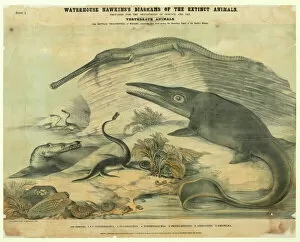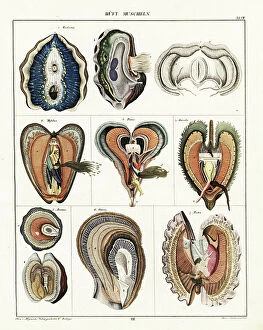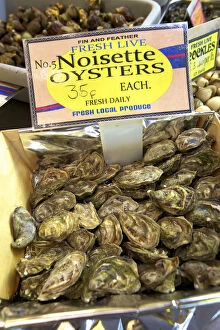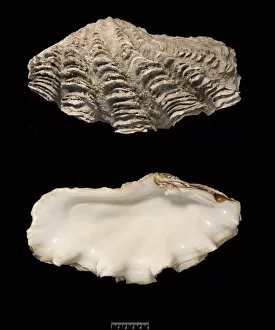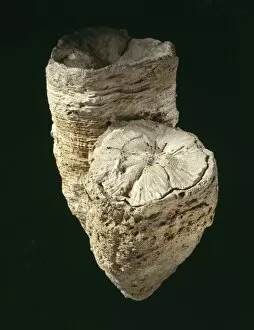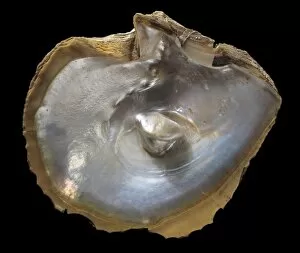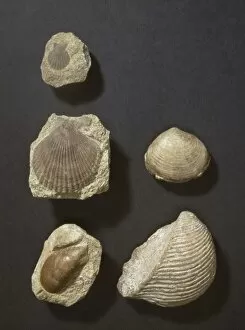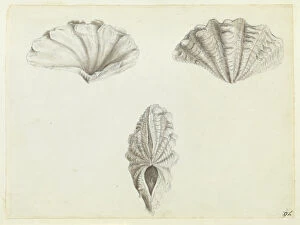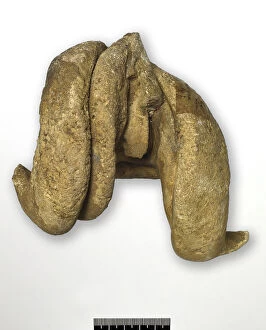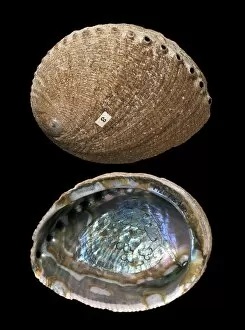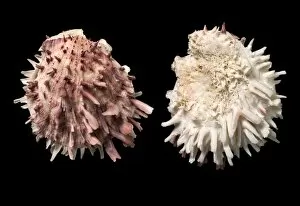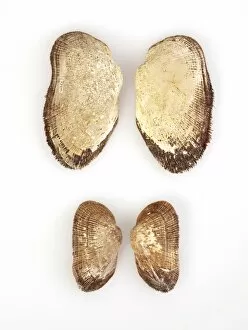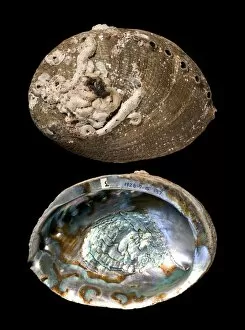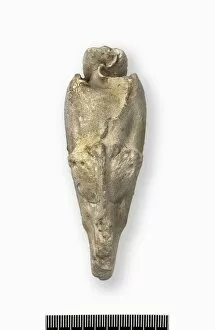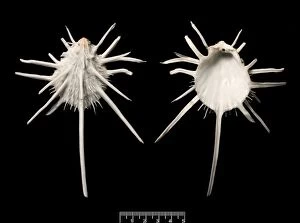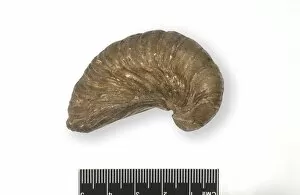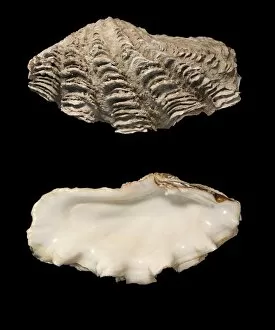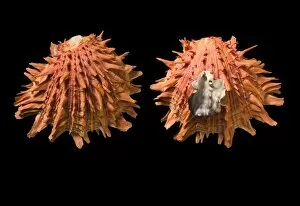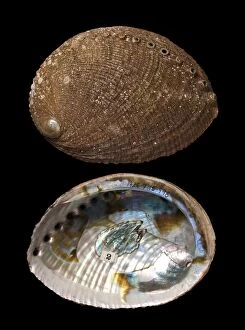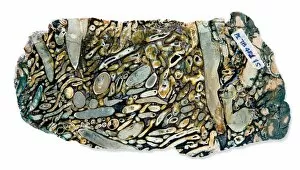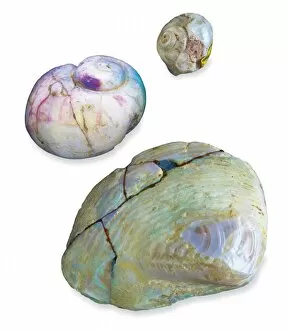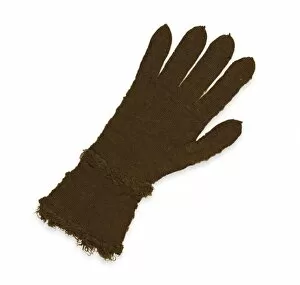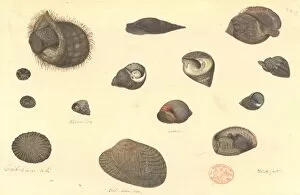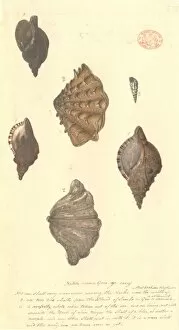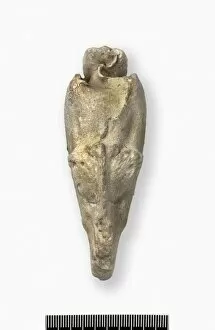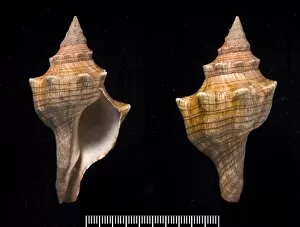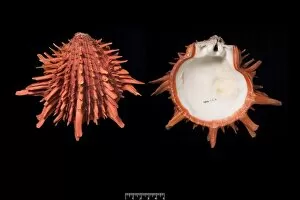Bivalve Mollusc Collection
"Exploring the Fascinating World of Bivalve Molluscs: From Extinct Marine Reptiles to Exquisite Shells" Delving into the past
For sale as Licensed Images
Choose your image, Select your licence and Download the media
"Exploring the Fascinating World of Bivalve Molluscs: From Extinct Marine Reptiles to Exquisite Shells" Delving into the past, we uncover the remains of extinct marine reptiles like Plesiosaurus, Telesaurus, and Ichthyosaurus alongside bivalve mollusc fossils. Nestled in Jersey's Noisette Oysters from the Channel Islands lies a taste of history and tradition that has captivated seafood enthusiasts for generations. Tridacna maxima Rǎg, 1798 – behold the majestic giant clam with its impressive size and intricate shell patterns that never cease to amaze. Marvel at Epidiceras speciosum (Munster), an internal cast of a bivalve mollusc showcasing its intricate structure and delicate beauty. Witness nature's artistry through five stunning bivalve fossil specimens, each telling a unique story millions of years in the making. Indulge your senses with close-up shots of cooked blue mussels adorned with fragrant herbs - a culinary delight that celebrates these remarkable creatures' flavorsome offerings. Admire the vibrant hues and intricate patterns adorning Green abalone shells C016 / 6055 - an exquisite example of nature's craftsmanship on display. European thorny oyster shells offer both visual intrigue and historical significance as they transport us back in time to ancient coastal landscapes dotted with these fascinating organisms. Immerse yourself in wonder as you explore European thorny oyster shells C016 / 6051 - their textured surfaces whisper tales from distant shores. From prehistoric giants like Tridacna gigas to delicate internal casts like Epidiceras speciosum (Munster), bivalve molluscs have left an indelible mark on our planet's history and continue to enchant us today.

